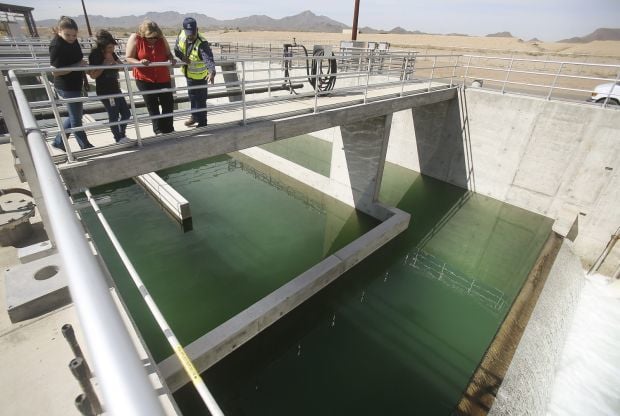The Tres Rios wastewater treatment plant is likely not the source of recent odor complaints in the West Ina and North Silverbell roads area.
At least that’s the conclusion of a recently completed study of the facility, which analyzed data collected by a private contractor.
“There have been no operational malfunctions at the Tres Rios facility that might be attributed to the recent odors at either the (Arizona) Pavilions or along Ina Road,” the summary reads.
“The takeaway for our department is that we have maintained regulatory compliance with fenceline monitoring,” John Warner, with county wastewater reclamation, said of the report.
Monitoring of the facility’s digesters, which Warner previously told the Star were the most likely culprits if the plant was at fault, showed only one “detectable odor value” between Nov. 28 and 30.
Perimeter monitoring near the digesters showed levels of hydrogen sulfide, which smells like rotting eggs, peaking at 10 parts per billion, well below the regulatory limit of 30 ppb. Odor levels were also low at other parts of the facility.
The wastewater department spends roughly $3.5 million annually on odor-control measures, according to the report.
Warner said they’re still waiting on lab results that could point to a specific source in the area.
The original complaints cited a range of offensive smells in the Marana area including garbage, rotting meat, manure, compost and sewage, Ursula Nelson director of the Pima County Department of Environmental Quality, previously said.
Nevertheless, Scott Porter, with the PDEQ, said he’s not ruling out the plant at this point, nor is he ruling out other potential sources in the area.
He said his department is also working to determine the source, adding: “We understand the seriousness of this and we’ll continue to investigate and do what we can to abate the nuisance.”
A Dec. 5 PDEQ report obtained by the Star states that inspectors noticed “a strong and foul odor” as they approached one of Tres Rios’ southern entrances. Porter felt a “slight burning” sensation in his eyes, according to the same report.
The wastewater report cited the possibility of a nearby compost, gravel and garbage facilities playing a role, adding that “these multiple odor sources, combined with the natural smells associated with the Santa Cruz River and season temperature inversions, can sometimes create ideal conditions for the occurrence of nuisance odors.”
Tank’s Green Stuff, the compost facility in question, is also likely not the source, according to its owner Jason Tankersley.
He said most of what his facility, at Ina Road near the Santa Cruz River, composts is wood and other green waste, along with a small amount of manure. Porter recently toured the site, and said he didn’t smell any “offensive odors,” but added that doesn’t “exclude them completely from the equation.”
County Administrator Chuck Huckelberry also weighed into the matter with a Nov. 29 memo claiming that on a bike ride he had smelled an odor closer to the “decomposition of earthy vegetative materials” rather than the “generally unmistakable odors arising from a wastewater treatment facility.”
Tankersely provided the Star with two 2016 PDEQ inspection reports, both of which noted that no strong or offensive smells could be detected at the location. One, written in mid-February, suggests that a Waste Management transfer station could be the source of the offensive smell.
However, garbage at the transfer station is "quickly transferred out and wouldn’t generate the odor issues the city has been experiencing," according to a statement provided by a Waste Management spokeswoman.
A spokeswoman for Vulcan Materials Co., which owns a concrete business nearby, said that no gravel or sand mining has taken place in the area for at least 1½ years and the concrete production is not “odor-causing.”
“The ingredients for concrete are rock, sand, cement and water,” Barbara Goodrich-Welk said.
Scott said PDEQ is getting cooperation from all the potential sources, and hopes to have a more conclusive answer within the next few weeks, though he pointed out that odor identification is by its very nature a difficult endeavor.
“You could have five different people standing at the same smell and they’ll give you five different descriptions,” he said.





